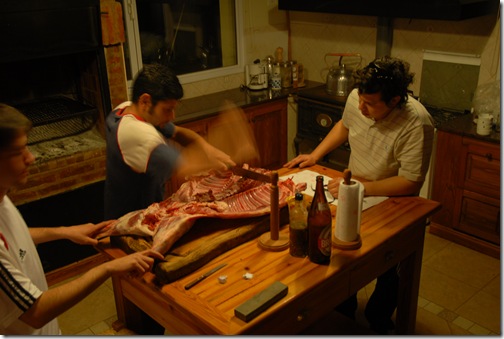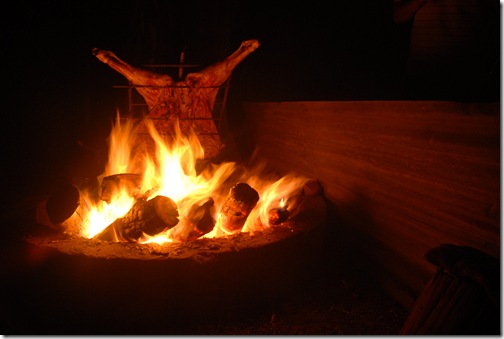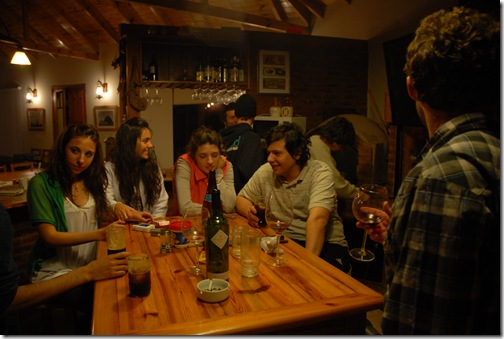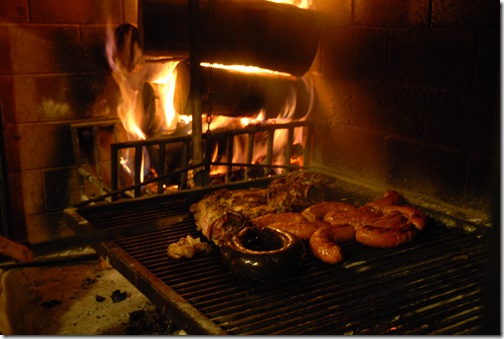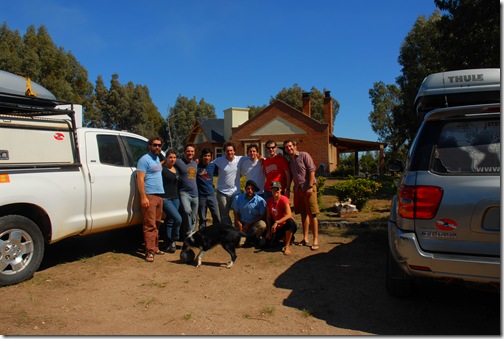Many parts of the world are still left undiscovered for all practical purposes. In fact only 200,000 people live in the Southern Part of Argentina, while the country has a population of over 40 million. When living in a metropolitan center of the world it is easy to forget just how wild parts of it are. Our recent trip down the Austral Highway in Chile presented, to me at least, one of the most beautiful parts of the world. The grand connection of this highway from the populated north of Chile to the undeveloped southern section was only finished in 2000 and it only services a small total of 100,000 people. Bus service is irregular or almost non-existent, and while we were passing through it was rare to come across more than a car or two driving it all day. It is adventures like this one that really answer the regular question begged of us, “Why drive your own cars?”
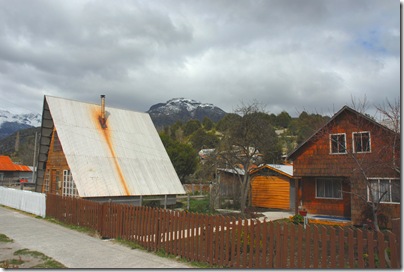 The answer is simple when you reach places like this where the lack of your own transportation makes the journey nearly impossible. We were drawn to this area specifically by an organization called H20 Patagonia in Futaleufú, a town just across the border from Argentina. They are a rafting company providing enthusiasts with the opportunity to enjoy the rivers here at are said to be some of the best rafting on the planet. Laura was in touch with a woman named Adriana who mentioned the volcano that exploded in Chaiten about 6 months ago devastating the area with deep ash covering everything for miles. Futaleufú has started to recover and although our customs problems pushed our schedule back, the plan was originally to attend a kickoff party to try to reinvigorate tourism in the area. Unfortunately for the locals, their livelihood is almost completely reliant on tourists, and a mountain wonderland covered in ash does not help their odds of reaching the list of top ten hot spots for tourism this year.
The answer is simple when you reach places like this where the lack of your own transportation makes the journey nearly impossible. We were drawn to this area specifically by an organization called H20 Patagonia in Futaleufú, a town just across the border from Argentina. They are a rafting company providing enthusiasts with the opportunity to enjoy the rivers here at are said to be some of the best rafting on the planet. Laura was in touch with a woman named Adriana who mentioned the volcano that exploded in Chaiten about 6 months ago devastating the area with deep ash covering everything for miles. Futaleufú has started to recover and although our customs problems pushed our schedule back, the plan was originally to attend a kickoff party to try to reinvigorate tourism in the area. Unfortunately for the locals, their livelihood is almost completely reliant on tourists, and a mountain wonderland covered in ash does not help their odds of reaching the list of top ten hot spots for tourism this year.
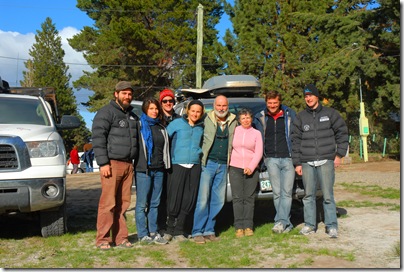 It could not have worked out better for us though and a visit to this area is a must…sooner, rather than later. We had to stop in Esquel in Argentina on our way. It is a reasonably sized town that had a Toyota dealership to get some work done. We stayed the night there in a Christian couple’s back yard that we randomly met while trying to find a place to camp. The next morning we were all woken up to fresh pastries and a devout Christian woman that was happy to tell us, in Spanish of course, all about the glory of the Lord. Although I am not a very religious person, it was a quite pleasant morning of reading a couple of bible verses with the requirement that all of us had to come in and wash our faces. I was the first one up that morning and spent about a half of an hour talking with her myself to find that her main concern was how the dirty six of us find places to shower while we are on the road. Our departure from their yard required a short prayer, and of course a photo with our kind hosts.
It could not have worked out better for us though and a visit to this area is a must…sooner, rather than later. We had to stop in Esquel in Argentina on our way. It is a reasonably sized town that had a Toyota dealership to get some work done. We stayed the night there in a Christian couple’s back yard that we randomly met while trying to find a place to camp. The next morning we were all woken up to fresh pastries and a devout Christian woman that was happy to tell us, in Spanish of course, all about the glory of the Lord. Although I am not a very religious person, it was a quite pleasant morning of reading a couple of bible verses with the requirement that all of us had to come in and wash our faces. I was the first one up that morning and spent about a half of an hour talking with her myself to find that her main concern was how the dirty six of us find places to shower while we are on the road. Our departure from their yard required a short prayer, and of course a photo with our kind hosts.
We made our way across the border and started to see more and more ash. Everything had a layer of gray. Tomorrow Melissa will have a blog with more on the volcano. Our experience may have been a dirty one while camping on the side of the river in Futaleufú and later in Chaitén, but seeing the destructive power of a volcano and the hopeful people that are there trying to restore this beautiful 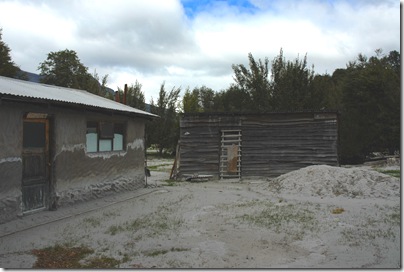 area is worth the sticky ash invading the trucks, tents and our clothes. It is a shame to think that many people will skip this destination because of the news. After spending time with the locals and seeing what has happened to them, the sooner you can get to this area and go rafting and stay in the hostels and hotels, the sooner these people can repair the damage. And the best part is that you will have the whole area that is normally full of tourists all to yourself. Just outside of Chaitén we stayed at a campground with hot springs right on the river, and of course we had all the facilities to ourselves. The hot geothermal baths were a great way to soothe our stiff joints from sleeping on the ground and sitting in the car for so long.
area is worth the sticky ash invading the trucks, tents and our clothes. It is a shame to think that many people will skip this destination because of the news. After spending time with the locals and seeing what has happened to them, the sooner you can get to this area and go rafting and stay in the hostels and hotels, the sooner these people can repair the damage. And the best part is that you will have the whole area that is normally full of tourists all to yourself. Just outside of Chaitén we stayed at a campground with hot springs right on the river, and of course we had all the facilities to ourselves. The hot geothermal baths were a great way to soothe our stiff joints from sleeping on the ground and sitting in the car for so long.
From Chaitén our eyes were wide open for the next 4 days on our way to Mt. Fitzroy and Chalten in Argentina. The steep walls of this glacial valley were full of waterfalls, gorgeous rivers, snow capped 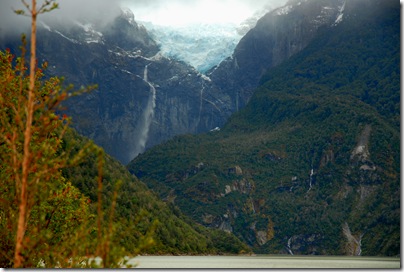 peaks, and even a stunning glacier that hangs thousands of feet above a lake. Over and over we all made comments back to each other about Peter Jackson mistake of doing Lord of the Rings in New Zealand instead of here. This is certainly a perfect stage for a fantasy movie about a mythical land full of magical creatures. I suppose that the logistics of producing a movie in a place only accessible by sea or miles of curvy potholed roads is probably not the most sound business decision, but for a crew of adventuring overlanders, we could not be more happy.
peaks, and even a stunning glacier that hangs thousands of feet above a lake. Over and over we all made comments back to each other about Peter Jackson mistake of doing Lord of the Rings in New Zealand instead of here. This is certainly a perfect stage for a fantasy movie about a mythical land full of magical creatures. I suppose that the logistics of producing a movie in a place only accessible by sea or miles of curvy potholed roads is probably not the most sound business decision, but for a crew of adventuring overlanders, we could not be more happy.
The final miles of this road took us over an amazing pass from Chile back into Argentina, and over the high peaks and mountain passes the scenery changes from rainy wet forest to the semi-desert landscapes of Argentinean Patagonia. It is hard to believe that this region of the world has remained largely undeveloped until the 80s. With beauty like this it would seem hard to keep the hotel chains and capitalists away. Somehow it remains a wild place that will keep jaws dropping in amazement of the beauty and hearts pumping for what each morning will bring on an adventure here. For five days we camped along this amazing road and are now finishing out the rest of this week filming and exploring the area around Chalten and Calafate in Argentina. This may be, at least geographically, one of the most exciting segments of the expedition so far.
The Hot Springs
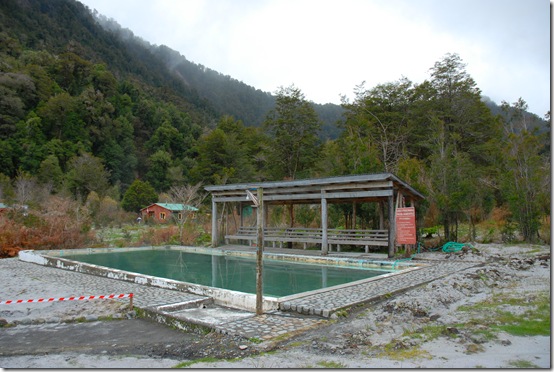
Chaitén
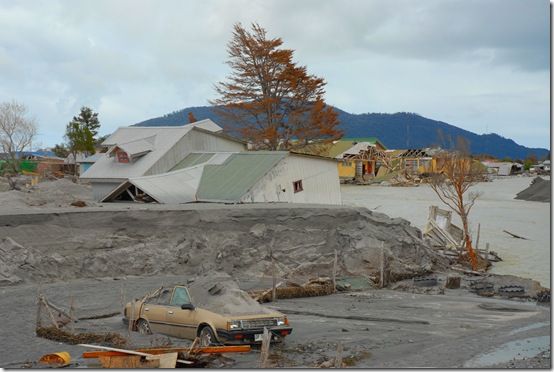
The pass back into Argentina
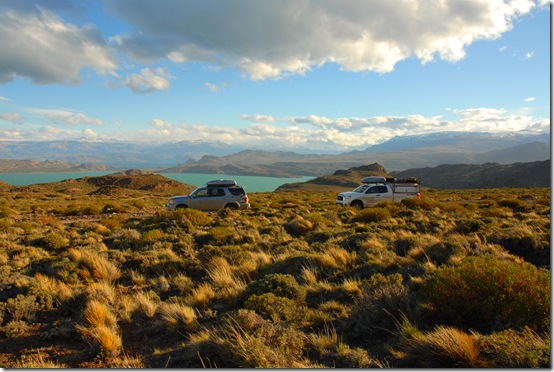
Mt. Fitzroy
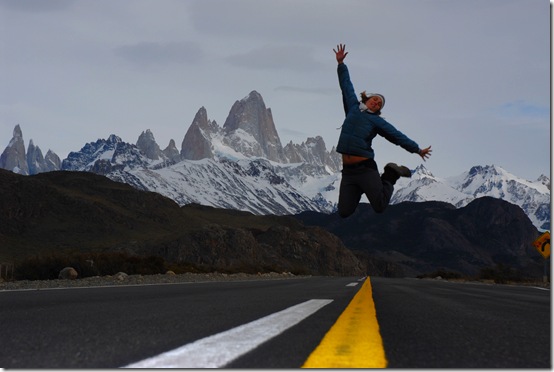
INSERT_MAP
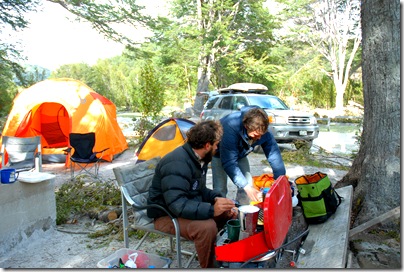 After camping in the outskirts of Futaleufú for the night we were able to get the idea (or so we thought) of living and dealing with all things volcanic ash…it is everywhere and its light powdery consistency permeates anything it comes in contact with. We were absolutely crazy to even entertain a complaint regarding the ash once we finally made the 4 hour drive east to Chaitén. I don’t think any newscast or local tale could’ve prepared us for witnessing the epicenter of the devastation. The town was reminiscent of a filming location for a movie detailing the apocalypse. Our first vantage point happened to be from the cemetery on the way into town, too, so that added to the creepy value just a little bit. As you may be able to tell from the pictures the ash has completely changed the topography of Chaitén absolutely burying some areas by up to 10 meters, as was the case in and around the graveyard. Although the ash pours down as a dust-like consistency, if it does it for hours and days on end it can build upon itself to form what might be misconstrued as cement packed hard and tight. It is this
After camping in the outskirts of Futaleufú for the night we were able to get the idea (or so we thought) of living and dealing with all things volcanic ash…it is everywhere and its light powdery consistency permeates anything it comes in contact with. We were absolutely crazy to even entertain a complaint regarding the ash once we finally made the 4 hour drive east to Chaitén. I don’t think any newscast or local tale could’ve prepared us for witnessing the epicenter of the devastation. The town was reminiscent of a filming location for a movie detailing the apocalypse. Our first vantage point happened to be from the cemetery on the way into town, too, so that added to the creepy value just a little bit. As you may be able to tell from the pictures the ash has completely changed the topography of Chaitén absolutely burying some areas by up to 10 meters, as was the case in and around the graveyard. Although the ash pours down as a dust-like consistency, if it does it for hours and days on end it can build upon itself to form what might be misconstrued as cement packed hard and tight. It is this 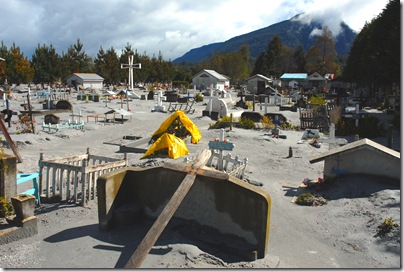 effect that caused yet another reeling catastrophe for the town. If the initial events of May 2 weren’t bad enough the mass of volcanic ash formed a dam in the town’s river causing it to flood before carving a path to sea all while severly damaging countless homes and properties. Redirecting the river is the first major task to restoring the once bustling tourist hub. There were only two industrial construction vehicles attempting this while we were there so all that can really be said is that it is coming along extraordinarily slowly, but nevertheless surely. It’s easy to believe that most of the former residents have simply given up as the damage proves to be beyond daunting. Apparently the government has provided what they can, but without the privatized monies and aid of insurance agencies to return to people what was once theirs, most people went ahead and have started over in surrounding areas. Even livable structures are useless as basic utilities have yet to be restored.
effect that caused yet another reeling catastrophe for the town. If the initial events of May 2 weren’t bad enough the mass of volcanic ash formed a dam in the town’s river causing it to flood before carving a path to sea all while severly damaging countless homes and properties. Redirecting the river is the first major task to restoring the once bustling tourist hub. There were only two industrial construction vehicles attempting this while we were there so all that can really be said is that it is coming along extraordinarily slowly, but nevertheless surely. It’s easy to believe that most of the former residents have simply given up as the damage proves to be beyond daunting. Apparently the government has provided what they can, but without the privatized monies and aid of insurance agencies to return to people what was once theirs, most people went ahead and have started over in surrounding areas. Even livable structures are useless as basic utilities have yet to be restored.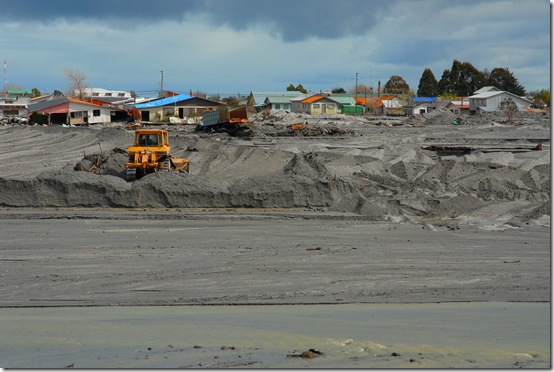
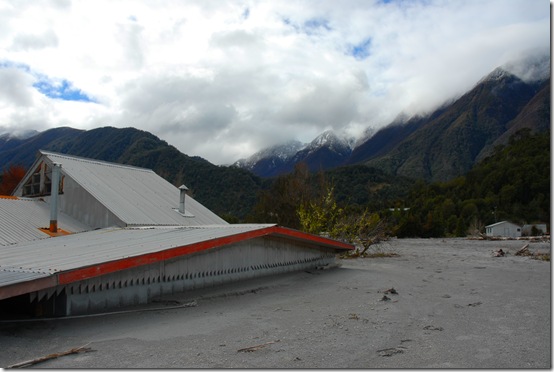
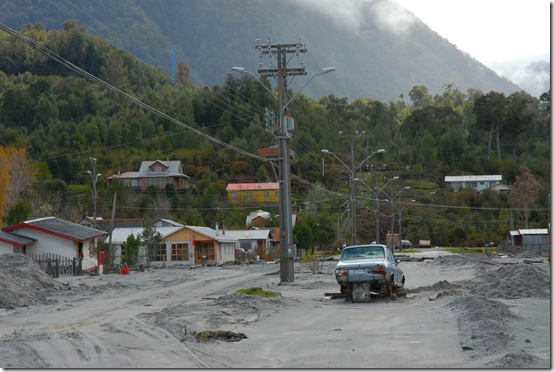
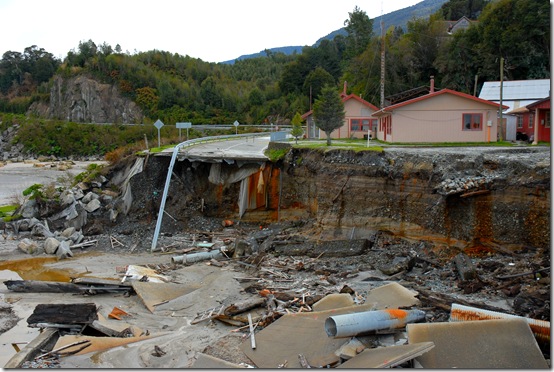
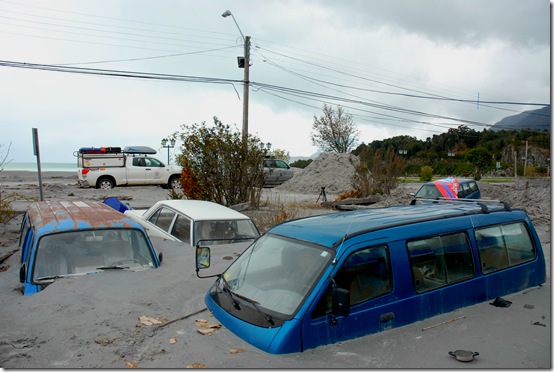
 The answer is simple when you reach places like this where the lack of your own transportation makes the journey nearly impossible. We were drawn to this area specifically by an organization called
The answer is simple when you reach places like this where the lack of your own transportation makes the journey nearly impossible. We were drawn to this area specifically by an organization called  It could not have worked out better for us though and a visit to this area is a must…sooner, rather than later. We had to stop in Esquel in Argentina on our way. It is a reasonably sized town that had a Toyota dealership to get some work done. We stayed the night there in a Christian couple’s back yard that we randomly met while trying to find a place to camp. The next morning we were all woken up to fresh pastries and a devout Christian woman that was happy to tell us, in Spanish of course, all about the glory of the Lord. Although I am not a very religious person, it was a quite pleasant morning of reading a couple of bible verses with the requirement that all of us had to come in and wash our faces. I was the first one up that morning and spent about a half of an hour talking with her myself to find that her main concern was how the dirty six of us find places to shower while we are on the road. Our departure from their yard required a short prayer, and of course a photo with our kind hosts.
It could not have worked out better for us though and a visit to this area is a must…sooner, rather than later. We had to stop in Esquel in Argentina on our way. It is a reasonably sized town that had a Toyota dealership to get some work done. We stayed the night there in a Christian couple’s back yard that we randomly met while trying to find a place to camp. The next morning we were all woken up to fresh pastries and a devout Christian woman that was happy to tell us, in Spanish of course, all about the glory of the Lord. Although I am not a very religious person, it was a quite pleasant morning of reading a couple of bible verses with the requirement that all of us had to come in and wash our faces. I was the first one up that morning and spent about a half of an hour talking with her myself to find that her main concern was how the dirty six of us find places to shower while we are on the road. Our departure from their yard required a short prayer, and of course a photo with our kind hosts. area is worth the sticky ash invading the trucks, tents and our clothes. It is a shame to think that many people will skip this destination because of the news. After spending time with the locals and seeing what has happened to them, the sooner you can get to this area and go rafting and stay in the hostels and hotels, the sooner these people can repair the damage. And the best part is that you will have the whole area that is normally full of tourists all to yourself. Just outside of Chaitén we stayed at a campground with hot springs right on the river, and of course we had all the facilities to ourselves. The hot geothermal baths were a great way to soothe our stiff joints from sleeping on the ground and sitting in the car for so long.
area is worth the sticky ash invading the trucks, tents and our clothes. It is a shame to think that many people will skip this destination because of the news. After spending time with the locals and seeing what has happened to them, the sooner you can get to this area and go rafting and stay in the hostels and hotels, the sooner these people can repair the damage. And the best part is that you will have the whole area that is normally full of tourists all to yourself. Just outside of Chaitén we stayed at a campground with hot springs right on the river, and of course we had all the facilities to ourselves. The hot geothermal baths were a great way to soothe our stiff joints from sleeping on the ground and sitting in the car for so long. peaks, and even a stunning glacier that hangs thousands of feet above a lake. Over and over we all made comments back to each other about Peter Jackson mistake of doing Lord of the Rings in New Zealand instead of here. This is certainly a perfect stage for a fantasy movie about a mythical land full of magical creatures. I suppose that the logistics of producing a movie in a place only accessible by sea or miles of curvy potholed roads is probably not the most sound business decision, but for a crew of adventuring overlanders, we could not be more happy.
peaks, and even a stunning glacier that hangs thousands of feet above a lake. Over and over we all made comments back to each other about Peter Jackson mistake of doing Lord of the Rings in New Zealand instead of here. This is certainly a perfect stage for a fantasy movie about a mythical land full of magical creatures. I suppose that the logistics of producing a movie in a place only accessible by sea or miles of curvy potholed roads is probably not the most sound business decision, but for a crew of adventuring overlanders, we could not be more happy.



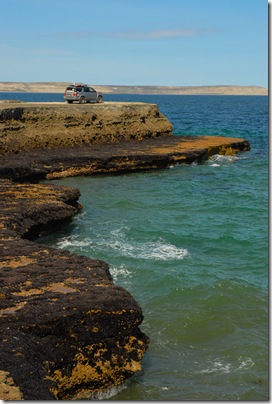 Well, folks, the zig-zagging of the southern cone of South America has officially begun! Saying that we have covered some serious ground since leaving Bahia Blanca, Argentina would be an understatement. Over the dizzying 1,300+ miles that we have driven in 10 days, we have toured the East coast of Argentina all the way to the West coast of Chile. The two coasts of the continent, as well as areas pocketing the international border are where most of our designated targets have been so far.Â
Well, folks, the zig-zagging of the southern cone of South America has officially begun! Saying that we have covered some serious ground since leaving Bahia Blanca, Argentina would be an understatement. Over the dizzying 1,300+ miles that we have driven in 10 days, we have toured the East coast of Argentina all the way to the West coast of Chile. The two coasts of the continent, as well as areas pocketing the international border are where most of our designated targets have been so far. 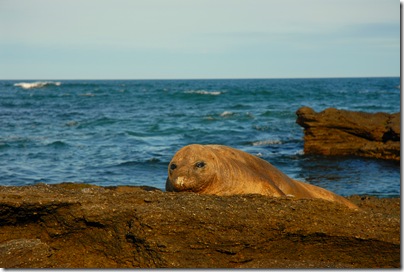 Since the main concern of the alpha male is to protect his harem, a row can occur as often as any other male attempts to compete for a female and, considering their size they certainly know how to throw their weight around. If any of the initial warning signs go unheeded by the alpha male, the end result is all 3,500kgs standing 5 meters upright to pummel the subordinate. So, although you may be welcome to get as close as you like, it’s best to watch them from a safe 10 meters back.
Since the main concern of the alpha male is to protect his harem, a row can occur as often as any other male attempts to compete for a female and, considering their size they certainly know how to throw their weight around. If any of the initial warning signs go unheeded by the alpha male, the end result is all 3,500kgs standing 5 meters upright to pummel the subordinate. So, although you may be welcome to get as close as you like, it’s best to watch them from a safe 10 meters back.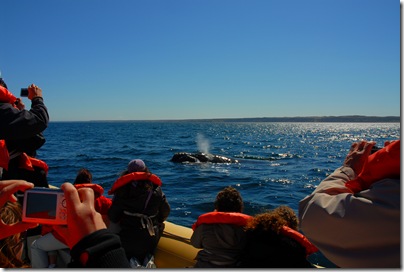 hours and you’ll pretty much be guaranteed to witness one of the worlds largest mammals just a few feet away…so close that it’s not uncommon to feel their breath spray your face every so often. **On a completely semi-unrelated side note, TWBR feels compelled to make mention of the fact that we got to spend those 3 hours with starlet
hours and you’ll pretty much be guaranteed to witness one of the worlds largest mammals just a few feet away…so close that it’s not uncommon to feel their breath spray your face every so often. **On a completely semi-unrelated side note, TWBR feels compelled to make mention of the fact that we got to spend those 3 hours with starlet 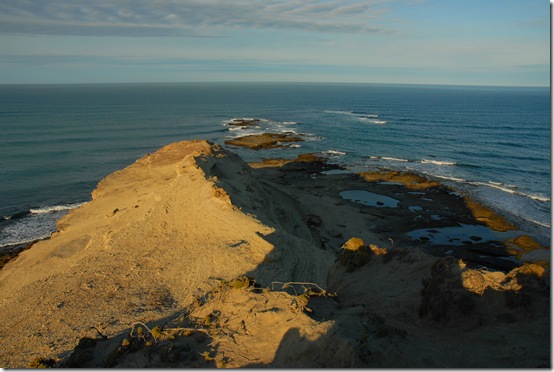
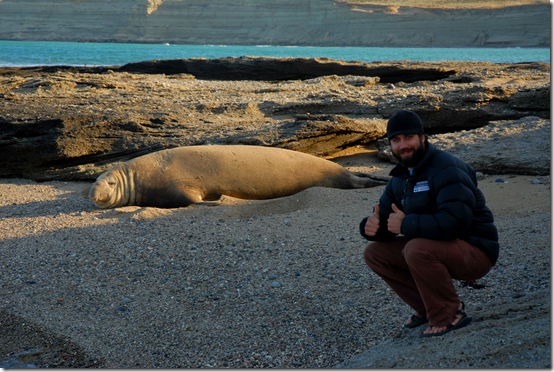
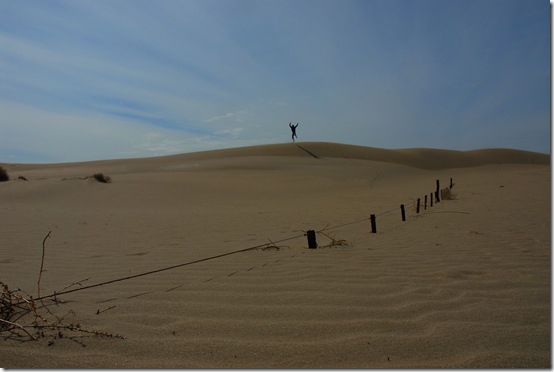
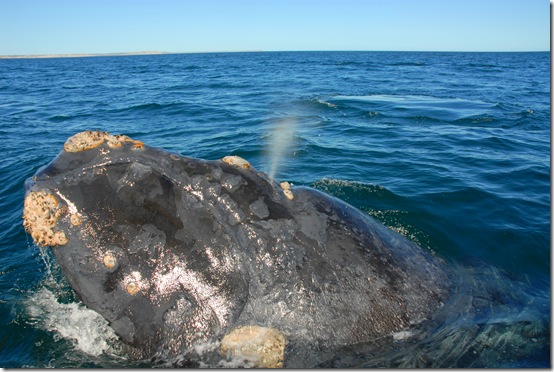
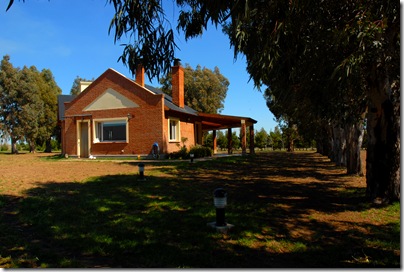 We thoroughly enjoyed the use of their weekend home about 30 minutes outside of Bahia Blanca on their 150 hectare farm. It was such a welcome change from the ridiculously loud and toxic downtown corner of Maipu and Juan D. Peron where most of our time in Buenos Aires was spent. There really is nothing like some good ol’ fashioned clichéd peace and quiet! It also didn’t hurt that they had a hammock to help take in the impeccable spring weather.
We thoroughly enjoyed the use of their weekend home about 30 minutes outside of Bahia Blanca on their 150 hectare farm. It was such a welcome change from the ridiculously loud and toxic downtown corner of Maipu and Juan D. Peron where most of our time in Buenos Aires was spent. There really is nothing like some good ol’ fashioned clichéd peace and quiet! It also didn’t hurt that they had a hammock to help take in the impeccable spring weather.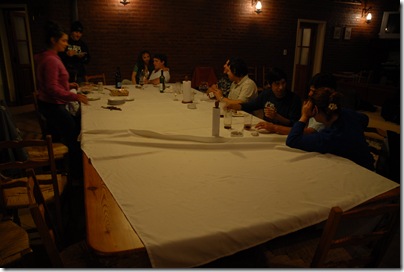 Their Parilla is right inside their Food Network style kitchen instead of out in the garden like most homes and they also have a 20 person dining table as the next major focal point of the house. Both Nicolas and Sofia invited over some friends, so including TWBR crew we totaled around 15…see if you can imagine all the beer and wine you can drink + all the different cuts of meat you can imagine and multiply that by 15…and that was just the first night.
Their Parilla is right inside their Food Network style kitchen instead of out in the garden like most homes and they also have a 20 person dining table as the next major focal point of the house. Both Nicolas and Sofia invited over some friends, so including TWBR crew we totaled around 15…see if you can imagine all the beer and wine you can drink + all the different cuts of meat you can imagine and multiply that by 15…and that was just the first night.